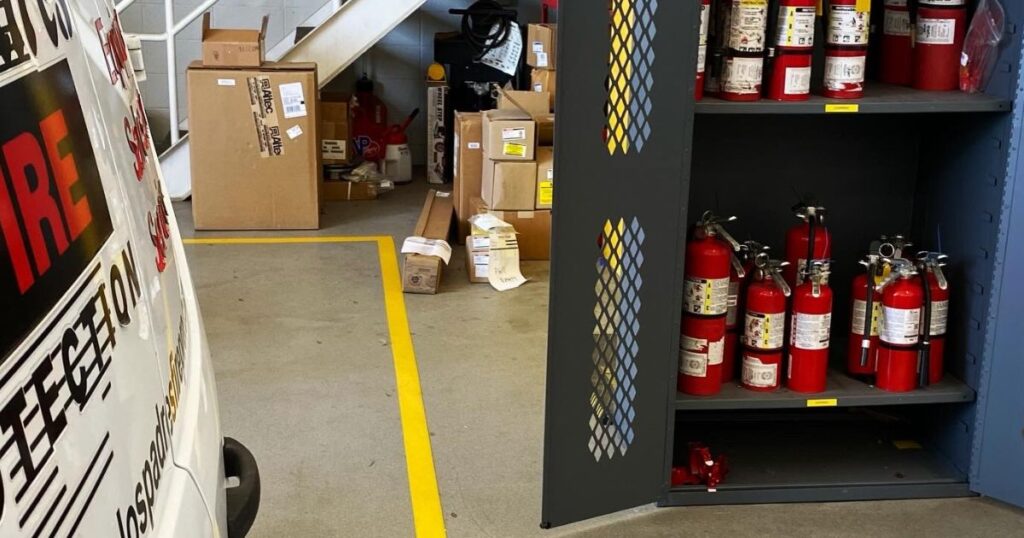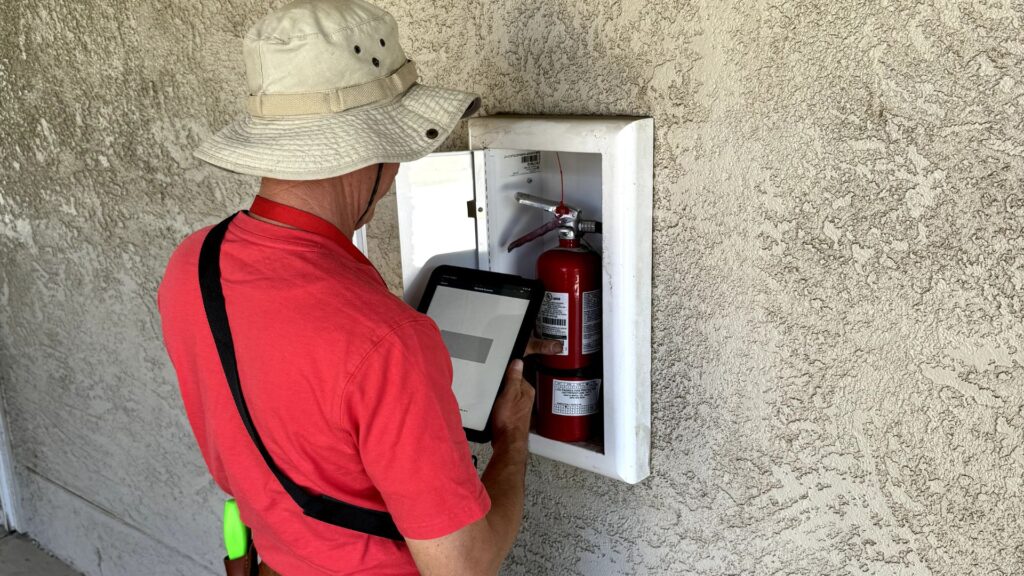A fire prevention plan protects your workplace by outlining steps to prevent and respond to fires. It’s often legally required and vital for safety. This article will guide you through creating a plan, identifying hazards, training employees, and utilizing fire protection equipment.
Key Takeaways
- A well-structured fire prevention plan is essential for workplace safety, reducing fire risks and enhancing employee preparedness.
- Regular inspections, employee fire safety training, and clear evacuation procedures are critical to identifying hazards and ensuring a coordinated response during emergencies.
- Leveraging technology and involving employees in fire prevention efforts fosters a proactive safety culture and enhances overall fire safety in the workplace.
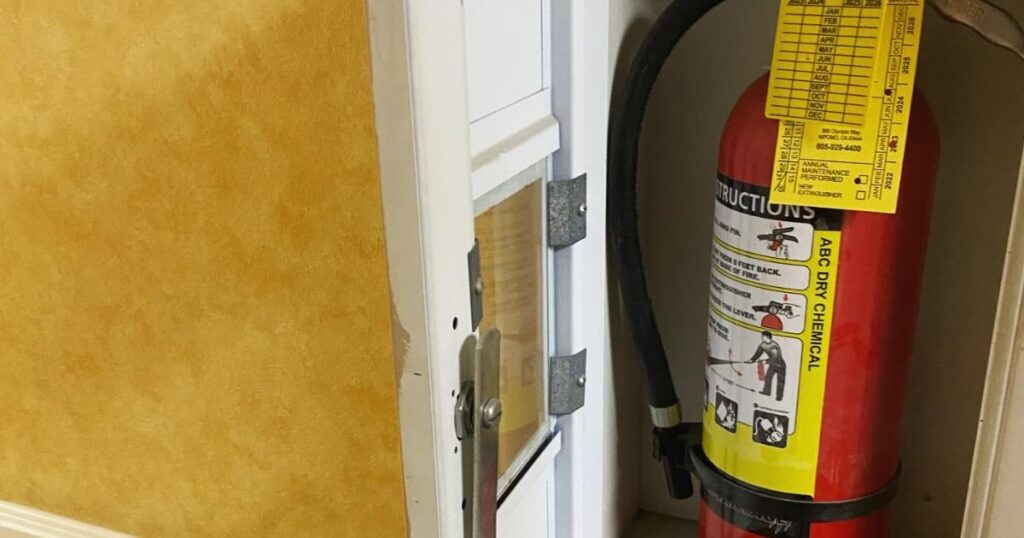
Understanding the Importance of a Fire Prevention Plan
The cornerstone of workplace safety is a well-structured fire prevention plan. Such a plan significantly lowers the chances of fires, ensuring the safety of employees and stakeholders. When employees understand fire risks and prevention measures, they are better equipped to handle emergencies, thereby enhancing overall plan benefit your workplace safety.
Beyond safety, implementing a fire prevention plan also bolsters a business’s reputation by demonstrating a commitment to safety and risk management. Moreover, legal requirements often mandate fire safety training to ensure compliance and protect the business operations from legal liabilities. Forward-thinking businesses not only meet regulatory standards but also demonstrate their commitment to employees’ well-being.
Identifying Potential Fire Hazards
Identifying potential fire hazards is crucial for fire prevention. Here are some key points to consider:
- Store combustible materials and combustible waste materials like paper and wood away from heat sources to reduce fire risk.
- Conduct frequent inspections of your premises to identify potential hazards, including hazardous materials and major fire hazards.
- Ensure proper storage of combustible materials to prevent many fire incidents.
By following these guidelines, you can significantly enhance fire safety in your environment.
Always monitor open flames from candles or heaters to prevent accidental fires. Recognizing potential ignition sources, such as faulty wiring or equipment, is critical in reducing fire risks and addressing fuel source hazards. Routine inspections and employee vigilance are key to maintaining a safe environment.
Teaching employees to spot workplace-specific fire hazards ensures everyone contributes to fire prevention. Employees aware of risks and mitigation techniques help maintain a safer workplace. Frequent inspections and proactive steps significantly lower the risk of fire emergencies.
Implementing Effective Fire Safety Training
Fire safety training is essential for enhancing workplace safety. It ensures employees understand fire risks and know how to prevent and respond to them. Regular sessions keep employees prepared for fire emergencies, enhancing overall safety.
Training should cover fire extinguisher use, identifying hazards, and employee training on evacuation procedures. Ensure this training is accessible to all employees. Fire drills reinforce lessons and help employees learn evacuation routes and emergency exits.
Fire safety training empowers employees to address unsafe conditions, promoting a proactive safety culture. Employees well-versed in their emergency roles can respond efficiently, potentially saving lives.

Developing Comprehensive Evacuation Procedures
Clear and comprehensive evacuation procedures are vital for ensuring safety during a fire emergency. All exit routes should be clearly marked with illuminated signs that remain visible even in smoke. Each area of the workplace should have designated escape routes that account for various potential hazards.
Regular fire drills are crucial for helping employees learn evacuation routes and procedures. Include procedures for assisting individuals with disabilities to ensure everyone’s safe evacuation.
Effective procedures minimize panic and ensure a swift, orderly exit during emergencies using the right tools.
Utilizing Advanced Fire Protection Equipment
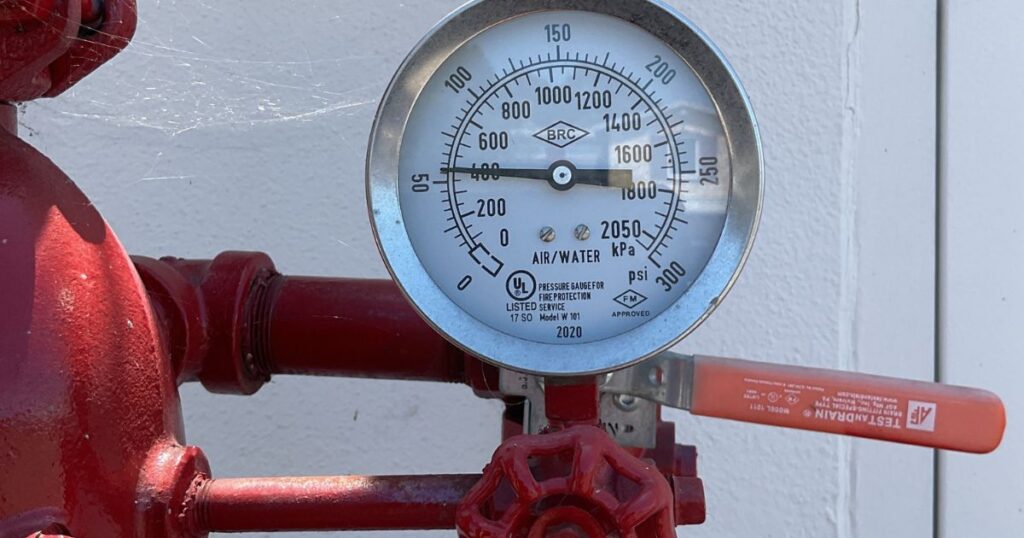
Advanced fire protection equipment is crucial for fire prevention and control. Fire extinguishers are designed for different fire classes, like Class A for combustibles and Class B for flammable liquids. Knowing which extinguisher to use in various situations is vital for effective fire control.
Sprinkler systems, such as wet and dry pipe designs, are essential for suppressing and preventing fire spread. Specialized systems like kitchen hoods and CO2 system effectively address specific fire hazards. These systems quickly contain fires, reducing potential damage.
Fire-resistant doors and windows contain fires and protect evacuation routes by withstanding flames and high temperatures. PPE, including fire-resistant clothing and helmets, is essential for protecting individuals during fire emergencies. Using the right fire protection equipment greatly enhances workplace safety.
Regular Maintenance and Inspections
Regular maintenance and regular inspections are key aspects of an effective fire prevention strategy. Routine inspections help identify and mitigate potential hazards before they escalate. Frequent inspections can reveal hazards like flammable materials or faulty equipment that might otherwise go unnoticed.
Annual safety inspections are often required to ensure compliance with fire codes and address safety issues. Fire inspectors assess critical safety elements, such as emergency exits and equipment, to ensure emergency readiness. Such inspections are essential for maintaining a safe working environment.
Regular maintenance of fire safety equipment ensures their effectiveness during emergencies. Routine assessments of equipment and electrical systems can spot potential hazards, ensuring systems function correctly and comply with safety standards. A post-assessment safety inspection certificate verifies compliance and boosts the business’s reputation.
Creating an Emergency Action Plan
An effective emergency action plan details specific roles and responsibilities for all employees during a fire. Assigning employees to emergency roles, such as fire wardens, enhances collective preparedness. Clear communication strategies within the plan ensure all staff are informed about fire alerts and evacuation procedures.
The plan must include procedures for reporting fires and activating alarms. Periodically review and update the planning to reflect changes in the workplace environment. Practicing responses to different fire scenarios significantly improves emergency preparedness.
Leveraging Technology for Fire Prevention

Technology is crucial in modern fire prevention strategies. IoT allows real-time monitoring of factors like temperature and humidity, identifying fire hazards early. Remote monitoring enables facility managers to access real-time fire safety data from any location.
IoT smoke detectors can trigger automated responses like shutting off appliances and activating suppression systems during a fire. Interconnected fire alarms offer faster, more accurate detection and precise location information for efficient evacuation.
Integrating IoT with Building Automation Systems (BAS) enables coordinated responses to fire events, enhancing safety protocols.
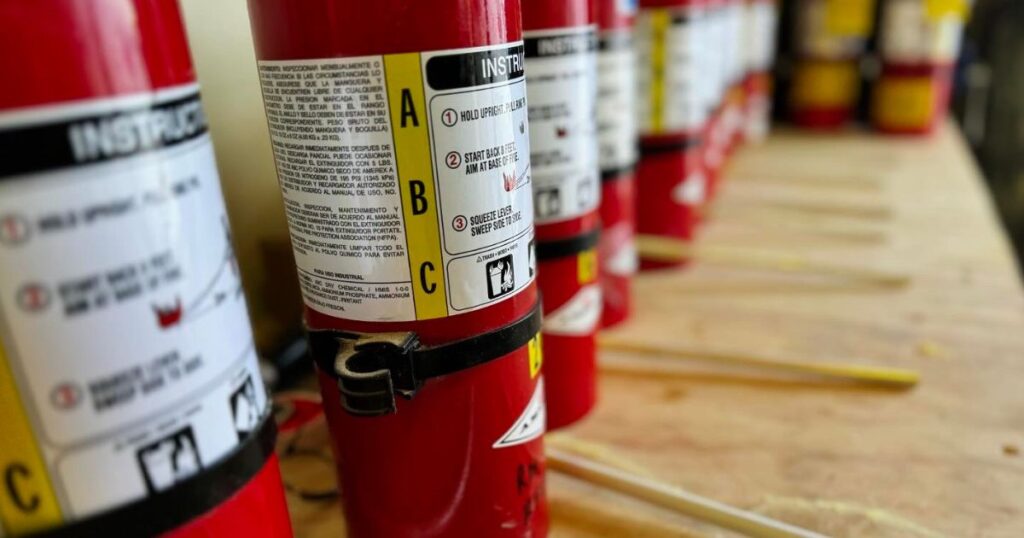
Benefits of a Fire Prevention Plan for Your Business
A robust fire prevention plan greatly reduces the risk of fire-related accidents. It protects physical assets, including equipment and sensitive documents, from property damage. Protecting these assets minimizes interruptions and enables quicker recovery from fire incidents, providing a significant benefit.
A well-structured fire prevention plan maintains a company reputation by showcasing its commitment to safety and responsible management. Fire prevention plans show that a business values its employees’ and stakeholders’ well-being, enhancing trust and loyalty, highlighting the fire prevention plan benefit.
Case Studies: Learning from Real-Life Incidents
Real-life incidents underscore the importance of effective fire prevention plans. Tragic event like the New Zealand hostel fire and Grenfell Tower fire show how inadequate fire safety measures can lead to significant loss of lives, property, and injuries that occur.
These examples highlight the need for comprehensive fire prevention strategies to prevent such disasters.
Employee Involvement in Fire Prevention
Employee involvement is crucial for effective fire prevention in the workplace. Employees play a key role in spotting potential fire hazards, allowing for early intervention. Regular training and promoting vigilance among employees can greatly enhance workplace safety and job security.
A safe working environment requires contributions from all employees. This includes everyone from frontline workers to decision-makers. Fostering a culture of safety and responsibility ensures everyone is committed to preventing fires and maintaining a secure physical workplace.
Summary
A comprehensive fire prevention plan is essential for safeguarding your workplace. By understanding the importance of fire prevention, identifying potential hazards, implementing effective training, and utilizing advanced equipment, businesses can significantly reduce fire risks. Regular maintenance, employee involvement, and leveraging technology further enhance fire safety measures. Commitment to these strategies not only protects assets and lives but also enhances your business’s reputation and resilience.
Frequently Asked Questions
How does a fire prevention plan benefit your workplace quizlet?
A fire prevention plan significantly reduces the likelihood of fires occurring and minimizes the risk of injuries during emergencies. Implementing such a plan enhances workplace safety and promotes a proactive safety culture.
How do you create a fire prevention plan?
To create an effective fire prevention plan, start by identifying major fire hazards in your home and develop proper handling and storage procedures for hazardous materials. Additionally, draw a map of your home outlining two exit routes from each room, ensure they are unobstructed, and establish an outside meeting place.
What must a fire prevention plan include?
A fire prevention plan needs to include a list of all potential fire hazards, as well as how to handle and store hazardous materials. It should include potential ignition source controls, and required fire protection equipment for each potential hazard. If you include all these elements, you will drastically reduce your risk and enhance your safety significantly.
Why is a fire prevention plan important for my business?
A fire prevention plan is crucial as it safeguards employees and assets, minimizes fire risks, ensures compliance with regulations, and bolsters your business’s reputation. Implementing such a plan demonstrates your commitment to safety and operational integrity.
What are common fire hazards in the workplace?
Common fire hazards in the workplace include combustible materials, open flames, faulty electrical equipment, and improper storage of flammable substances. It’s essential to identify and manage these risks to ensure a safe working environment.
